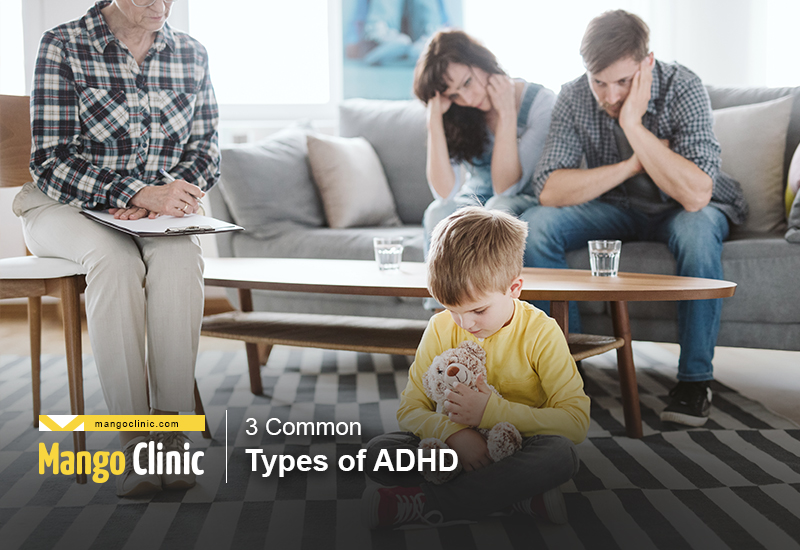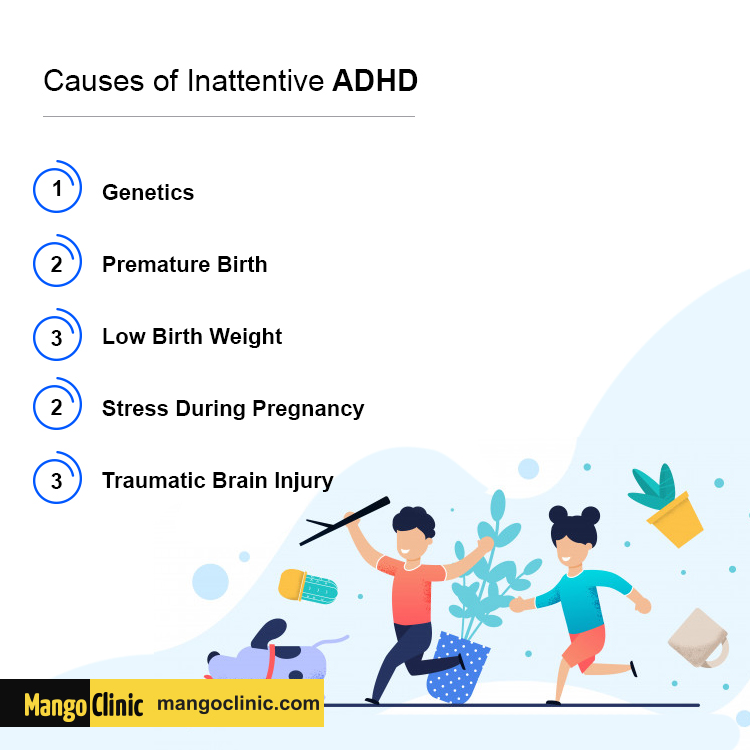What Are the Three Common Types of ADHD?

Attention Deficit Hyperactivity Disorder, shortly known as ADHD, is a chronic mental condition that mostly affects children and, occasionally, adults. Generally, the condition is characterized by impulsivity, difficulty paying attention, and hyperactivity. However, like other common mental conditions, these symptoms vary from one person to another. Similarly, the symptoms can occur together in some cases or occur individually without others.
Looking for medicinal ADHD treatment? Click the button below to book your appointment.
Diagnosis and classification of ADHD depend on the presenting symptoms, which become apparent as the child grows. Below are the common types of ADHD.
1. Hyperactive-Impulsive Type
As the name suggests, hyperactivity and impulsivity mainly characterize this type of ADHD. However, children may not demonstrate any abnormal behavior in their early childhood, during the preschool and early school years. Though your child may demonstrate different behaviors, they are within the normal range. For instance, the child may run in circles, bang into people and objects, ask endless questions, and doesn’t rest.
However, as the child grows, they demonstrate behavior signaling hyperactivity and impulsivity. This includes running around the house restlessly, climbing on furniture, and refusing to stay calm when eating or reading. If not intervened, children with hyperactive-impulsive ADHD develop into middle childhood with these symptoms.

They may play actively for long, interrupt other children’s games, have difficulty in completing chores, cannot sit at mealtimes, fidgets with everything, and makes disruptive noise. Similarly, your child can grow with these symptoms into adolescence if not treated.
In adulthood, affected individuals can engage in active social activities for abnormally long periods, fooling around that annoys others, engage in very risky behaviors, restless, interrupt others, and often gets in trouble. Hyperactive symptoms may decrease or be replaced with restlessness in adulthood.
Key symptoms of hyperactive-impulsive ADHD include:
- Constant fidgeting
- Squirming
- Frequent interruptions
- Talking or blurting out
- Inability to stay calm.
- Running and climbing inappropriately.
- Always “on the go.”
- Cannot play quietly
Get your ADHD treated. Click the button below to book your appointment.
2. Inattentive Type
As the name suggests, children with the inattentive type of ADHD have trouble focusing on activities and easily get distracted. For one to be diagnosed with this condition, they should present at least six of the following symptoms:
- Doesn’t pay attention to detail
- Makes careless mistakes
- Difficulty in listening
- Unable to follow and understand instructions
- Easily distracted
- Very forgetful
- Avoids tasks that require a lot of effort
- Losing key items required to complete a task
Even with the above symptoms, your doctor can suggest some tests to rule out medical conditions that present with similar symptoms. That said, your child may be examined for anxiety and depression, hearing and vision problems, and learning disabilities.
Children with inattentive ADHD can benefit from medications that improve their concentration. Therapies with various devices can also help stimulate specific parts of the brain that causes ADHD. One of the FDA’s recently approved devices is the Monarch external Trigeminal Nerve Stimulation System, which has proven effective for children above 7 years who have not taken any ADHD medication. Experts also suggest a combination of therapy and medication.
Behavior therapy, which involves some parenting tactics, is also beneficial. For instance, you can establish a reward system for excellent behavior and withdraw some privileges if the child engages in unwanted behaviors.

Parents and teachers can also use the following tips to improve the behaviors of children with inattentive ADHD.
- Have to-do lists
- Divide large projects into small tasks
- Give clear and easily understandable instructions.
- Establish a routine
- Minimize distractions
3. Combination Type
Children suffering from a combination type of ADHD don’t have exclusive symptoms for inattention or hyperactive-impulsive type. Such patients have combined symptoms of both types. This means that such children have severe symptoms compared to those diagnosed with predominantly inattentive or hyperactive-impulsive types.
With combined symptoms, diagnosing combined ADHD is quite challenging. However, psychiatrists use the DSM-5 classification manual to categorize children based on the evaluation of their behavior. For one to be diagnosed with combined ADHD, they should demonstrate at least six symptoms of hyperactive-impulsive behavior and inattention. Additionally, the behaviors should have disrupted the child’s life for at least six months.
Apart from showing patterns of hyperactivity, impulsivity, and inattention, DSM-5 classification states that the patient should have displayed these symptoms before 12 years. They should also be present in more than one settings, such as both at home and at school.
Get proper treatment for ADHD from expert physicians. Click the button below to book your appointment.
Bottom Line
While the causes of ADHD are unknown, most researchers suggest that the traits are genetically inherited and passed from parents to children. That aside, other factors thought to increase the risk of ADHD in children include premature birth, brain injuries during birth, low birth weight, exposure to lead during childhood, and excessive cigarette smoking and alcoholism during pregnancy.
Contact Us at Mango Clinic for ADHD treatment or click the banner below to book your appointment.





